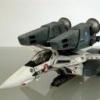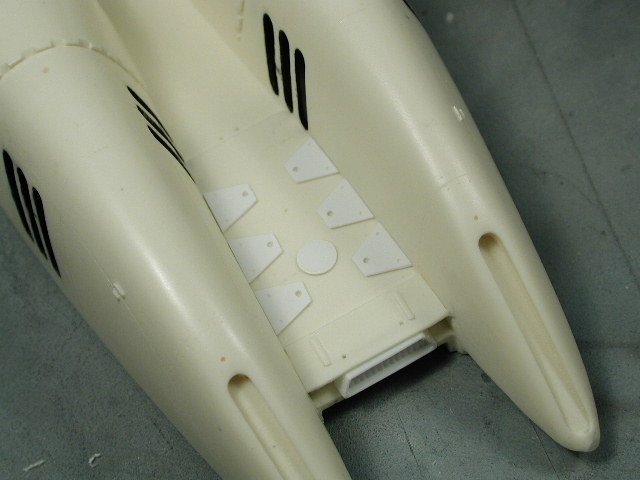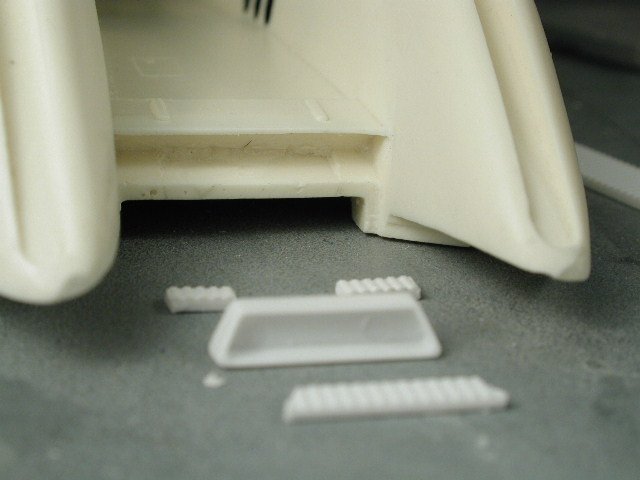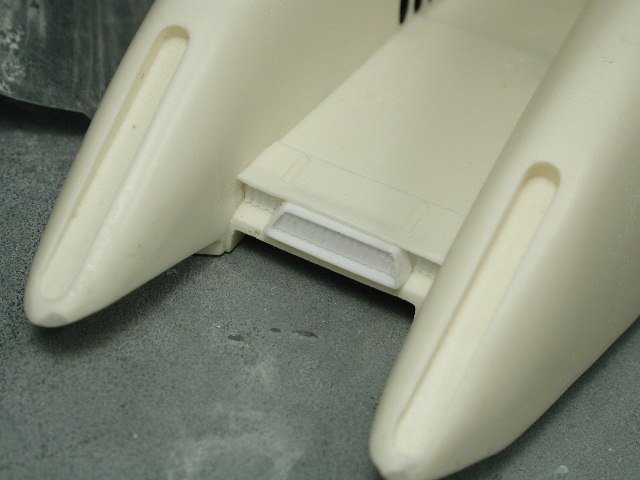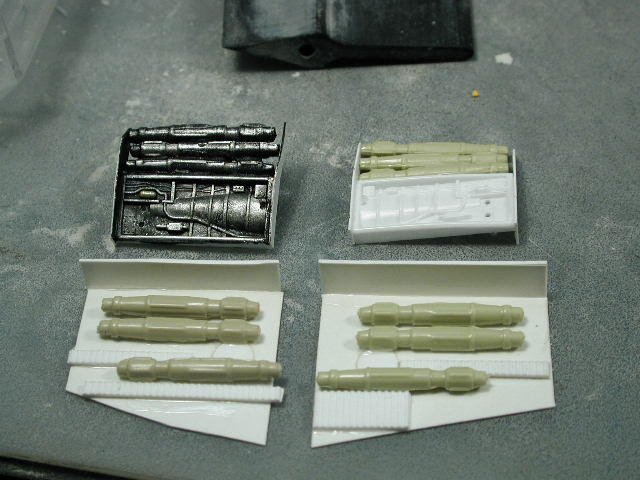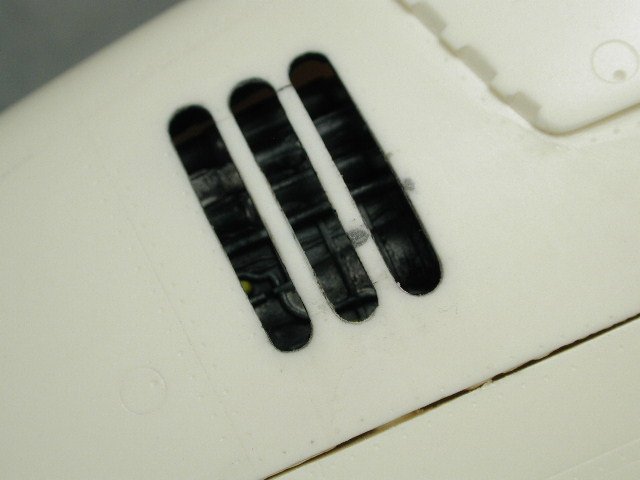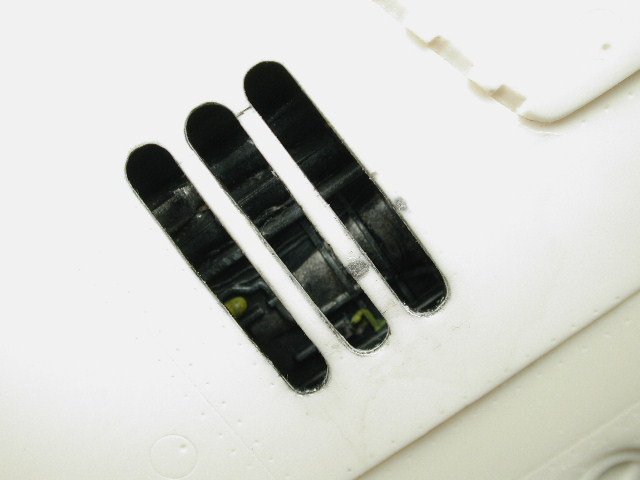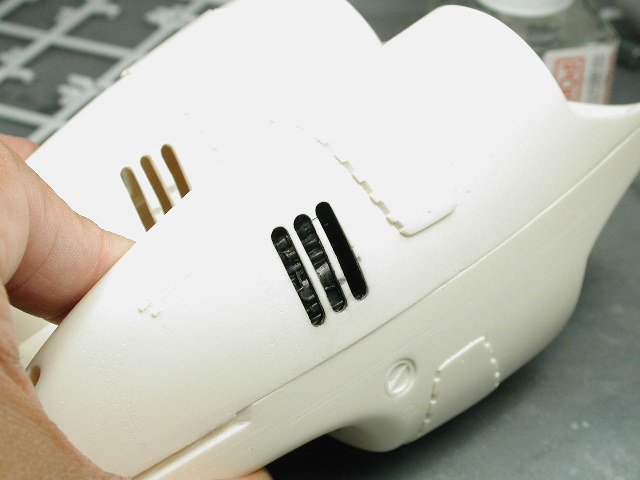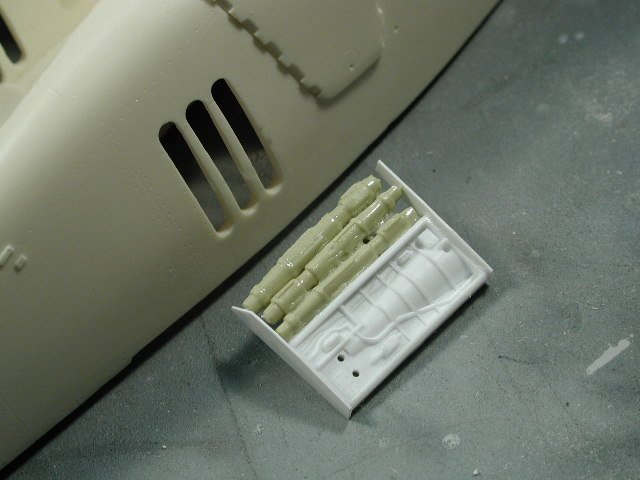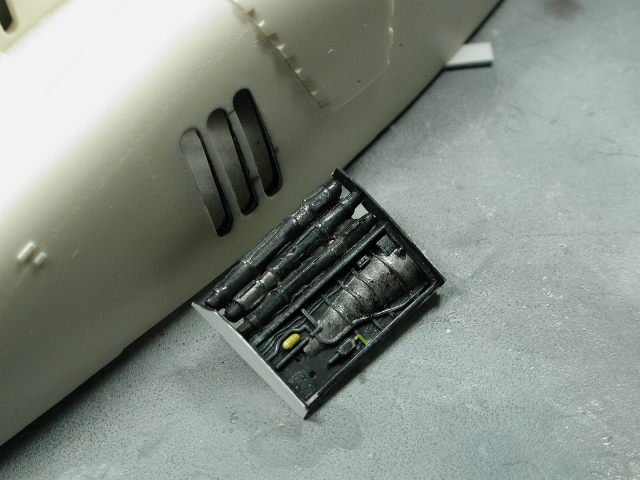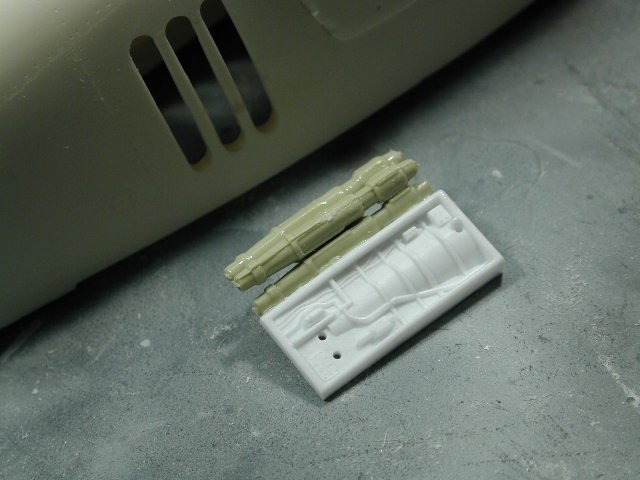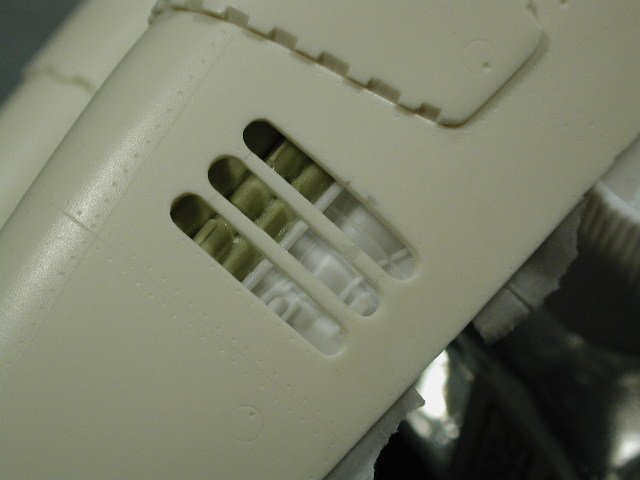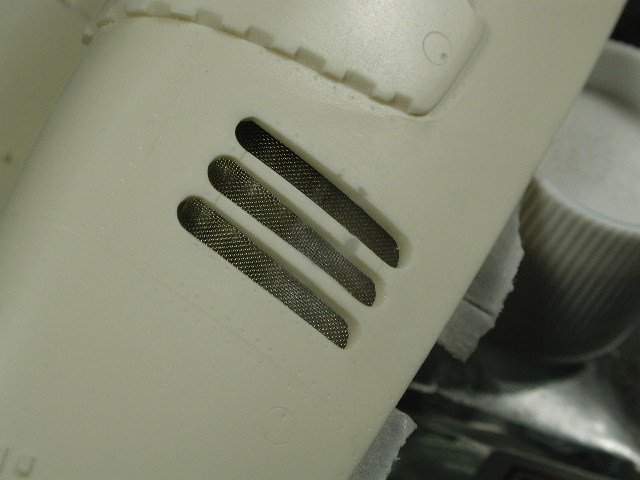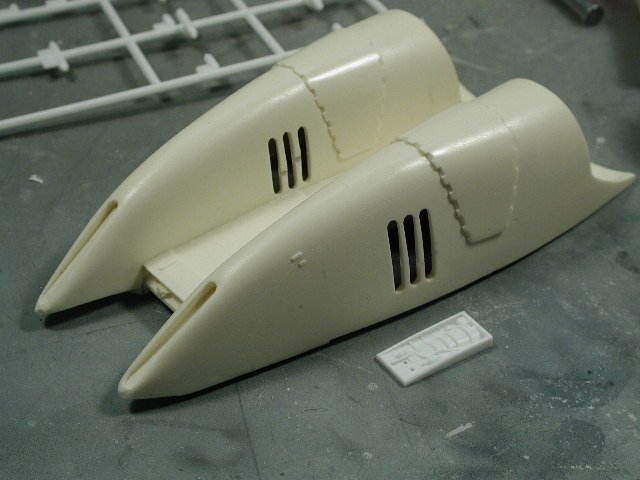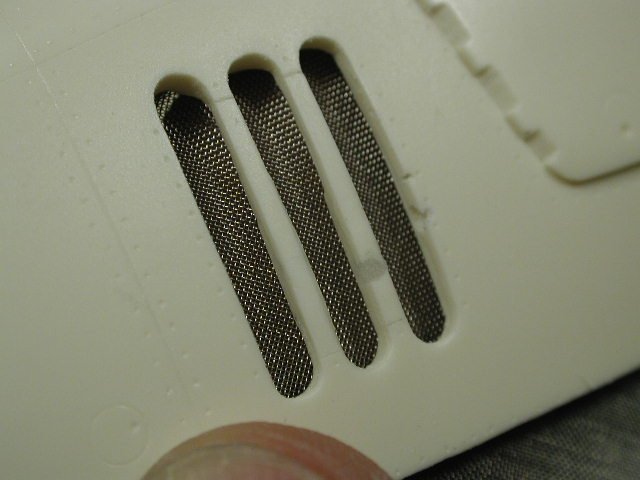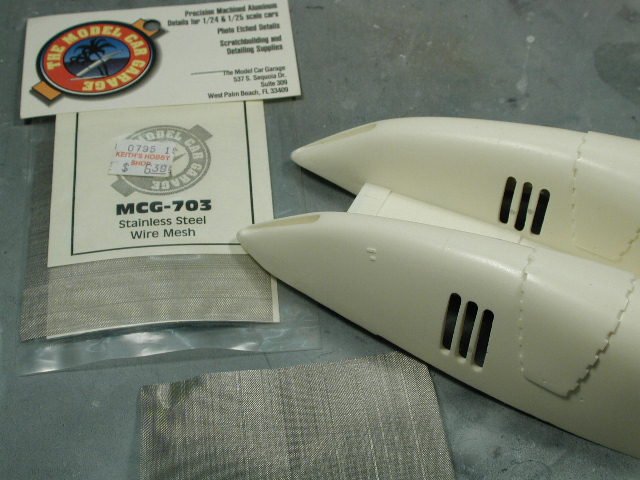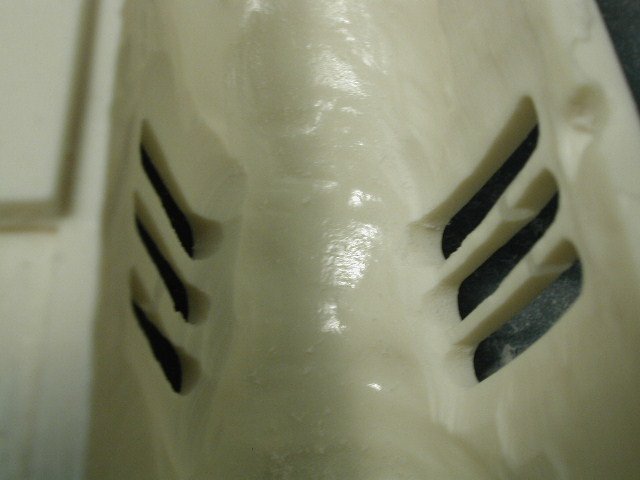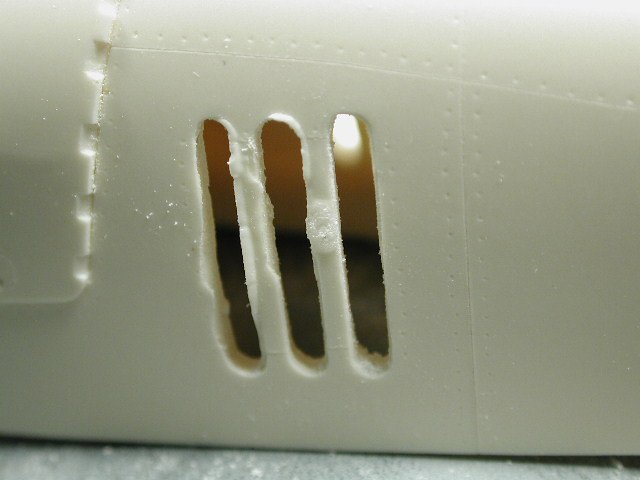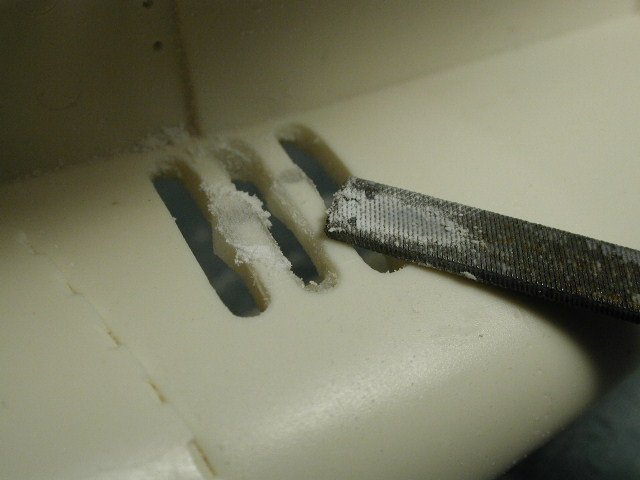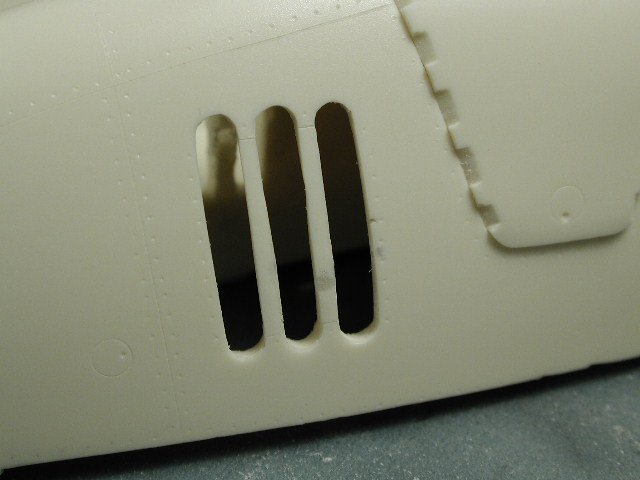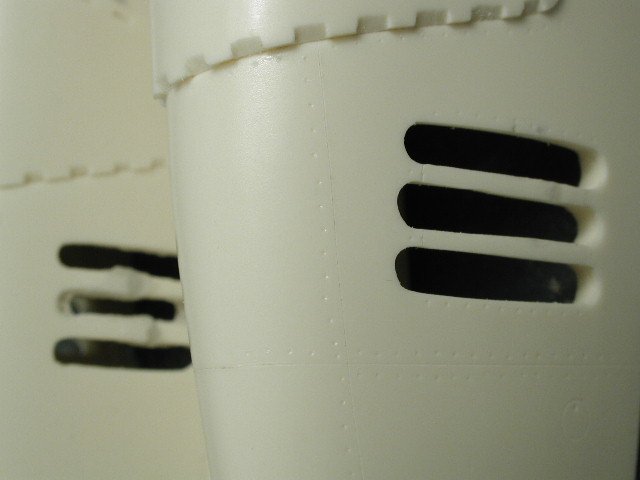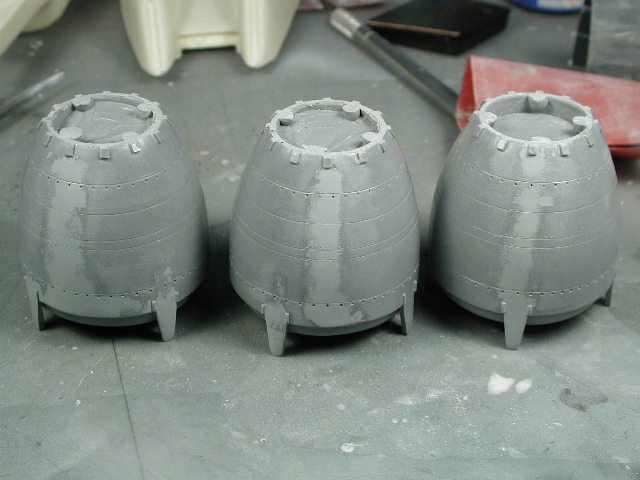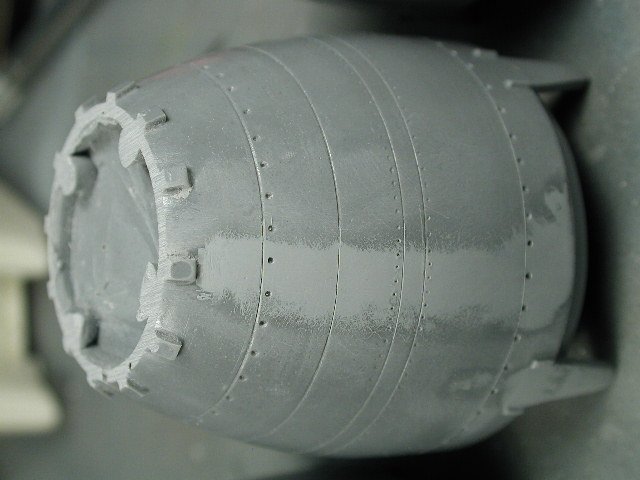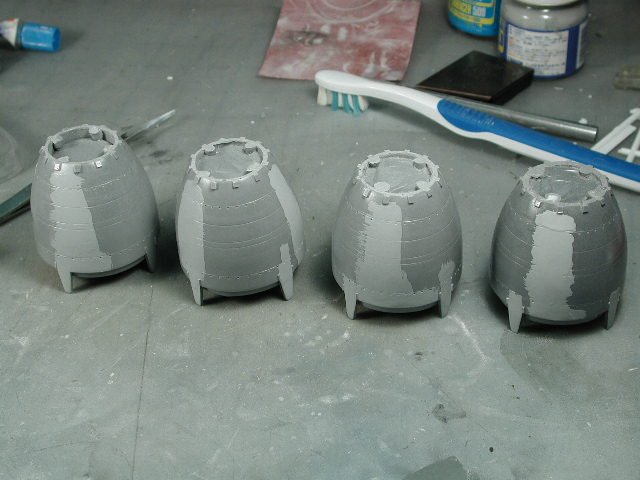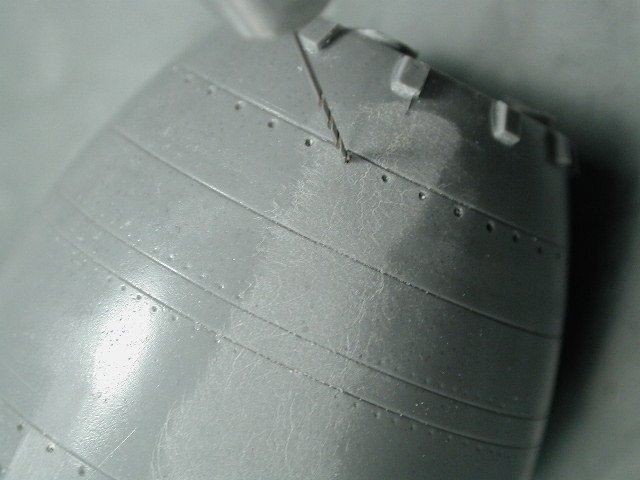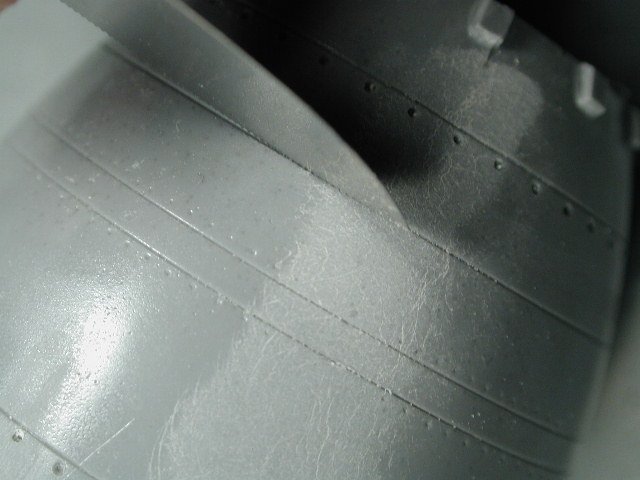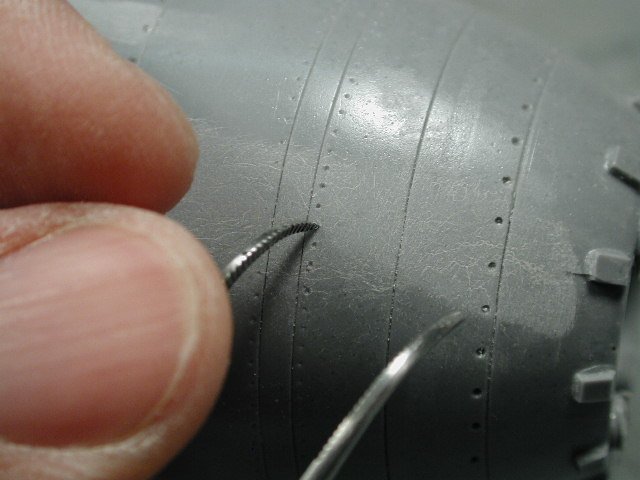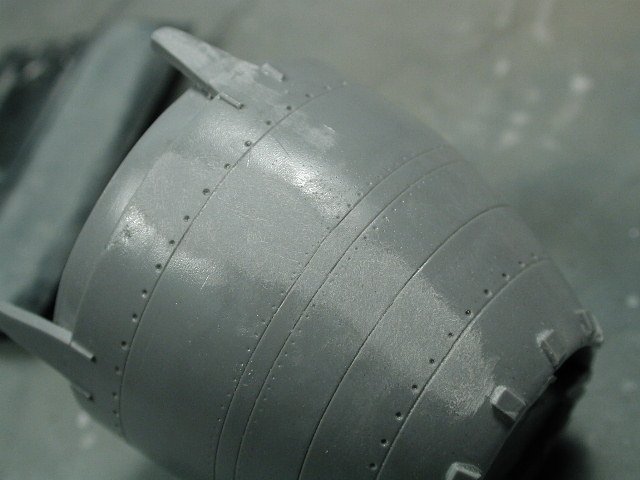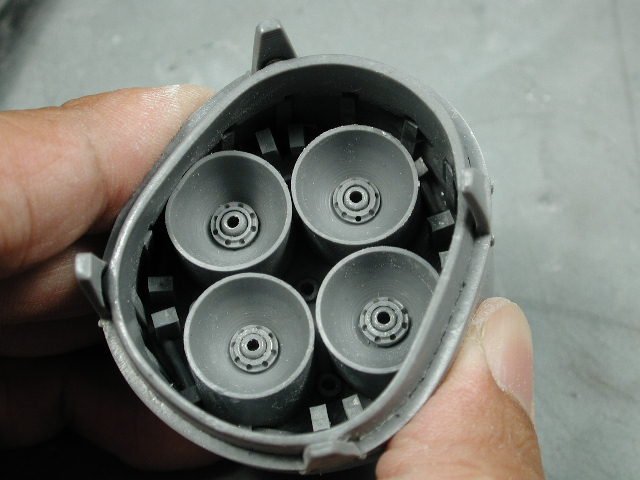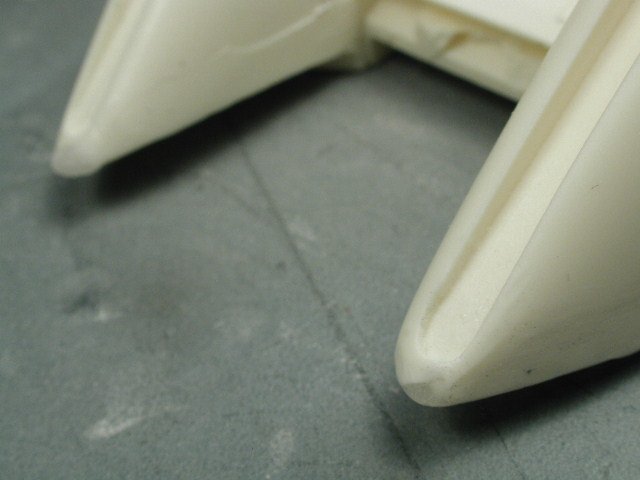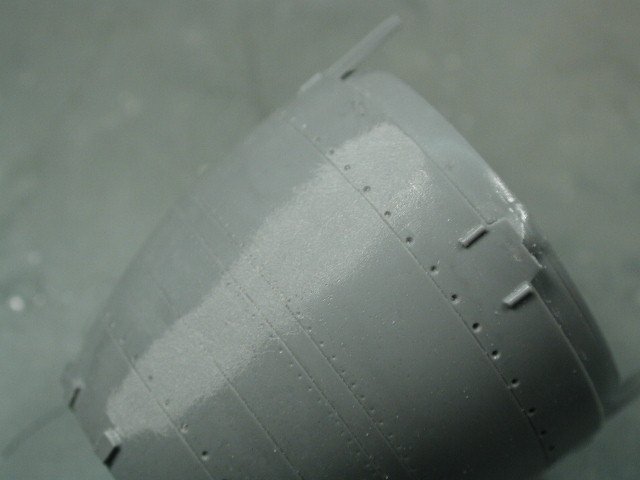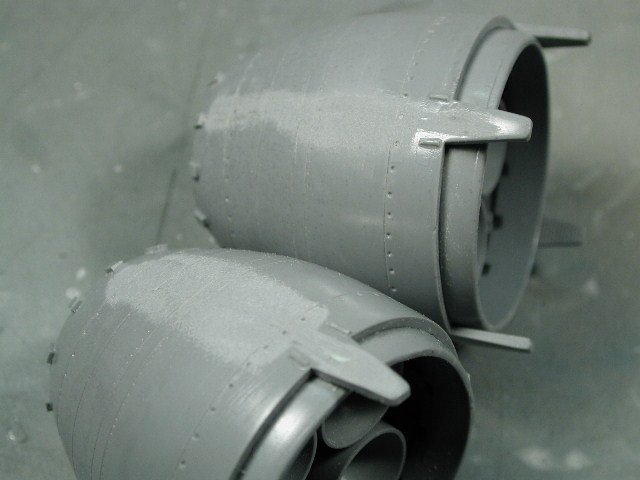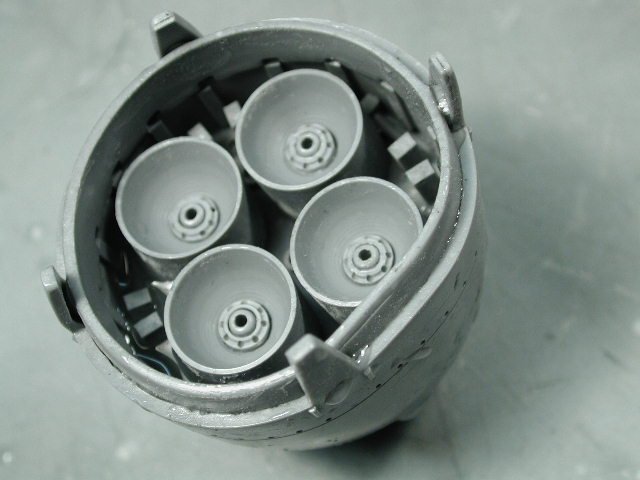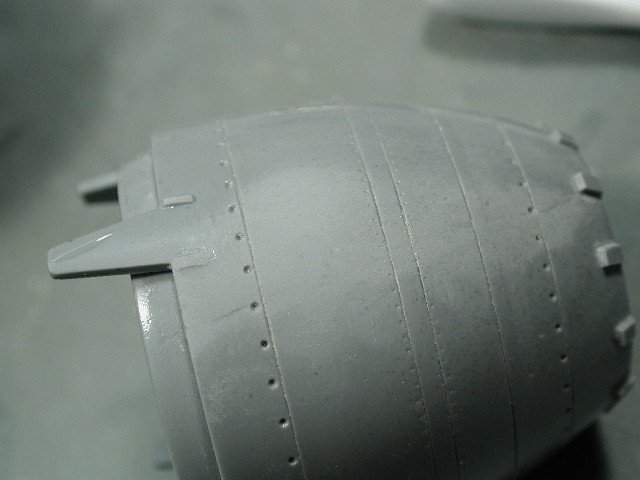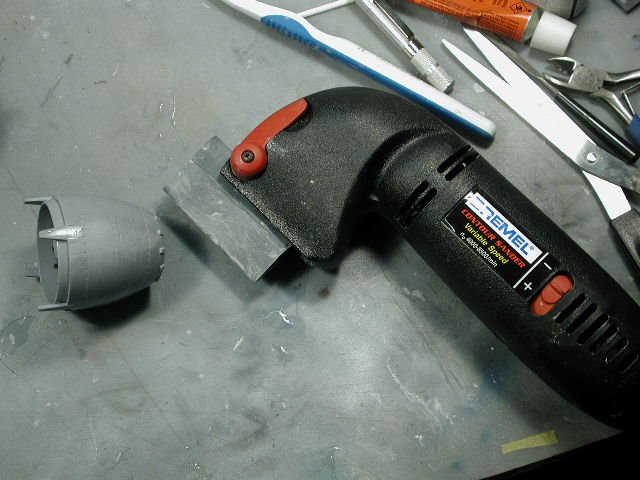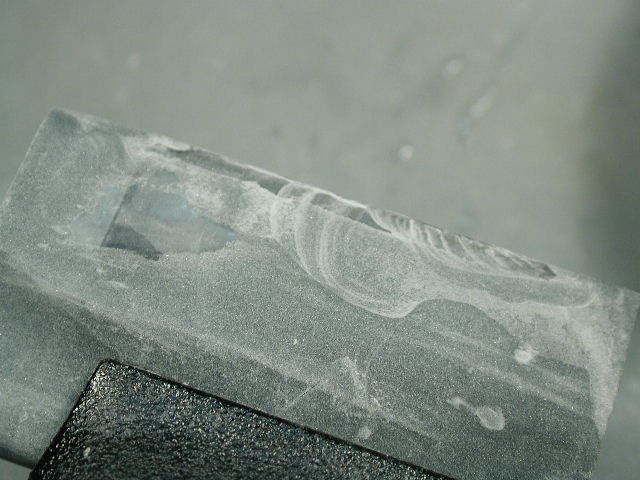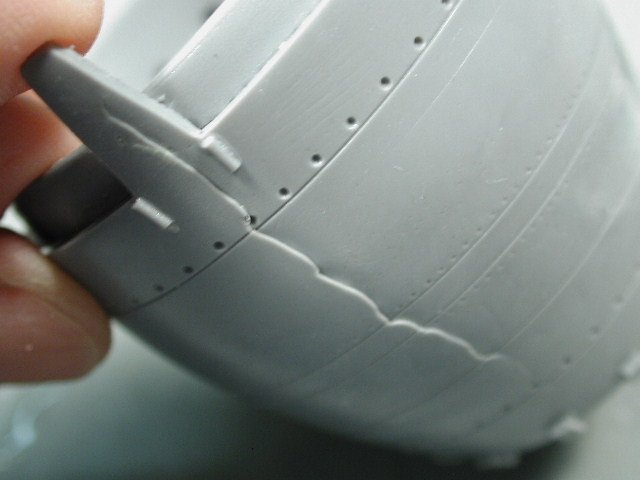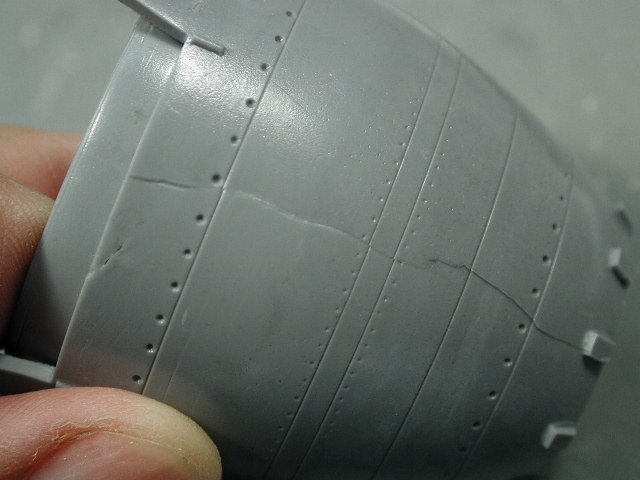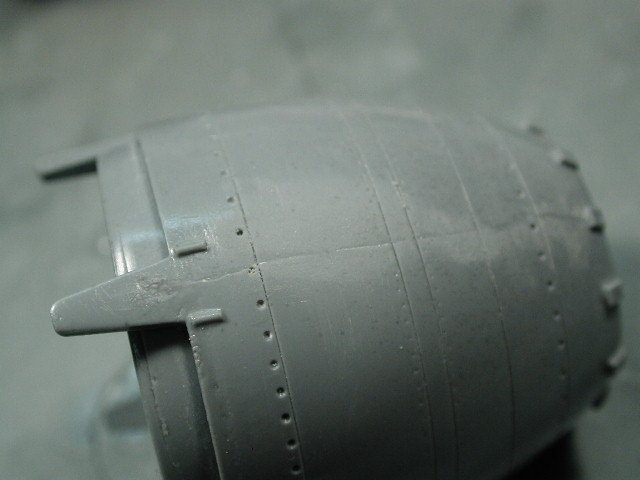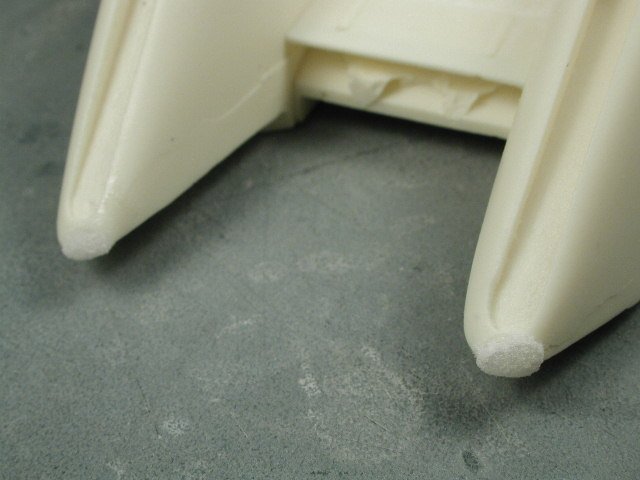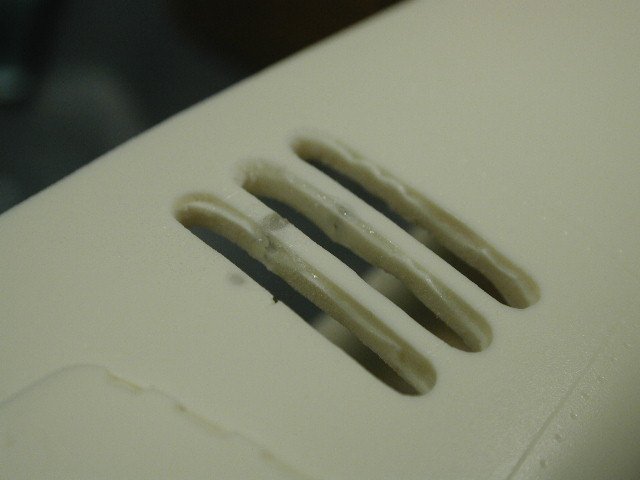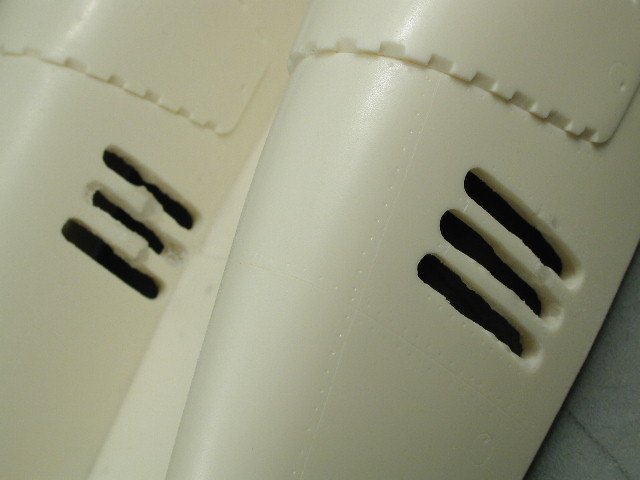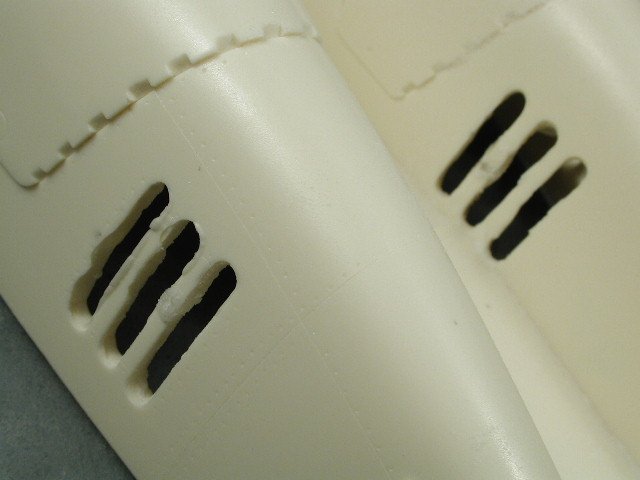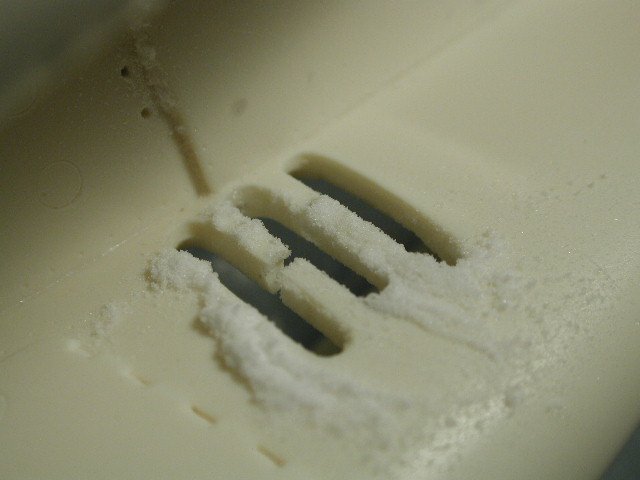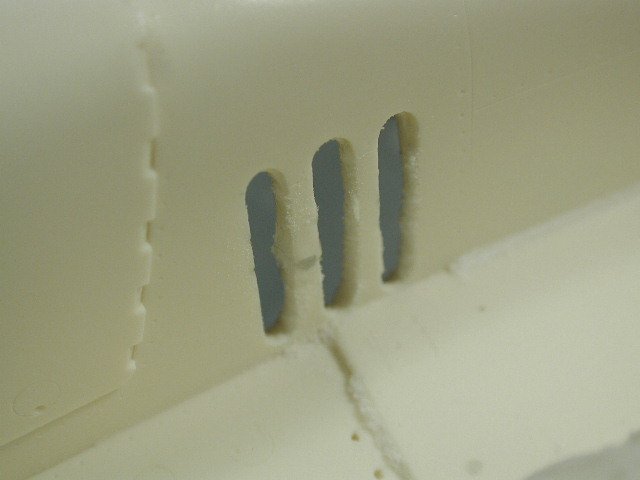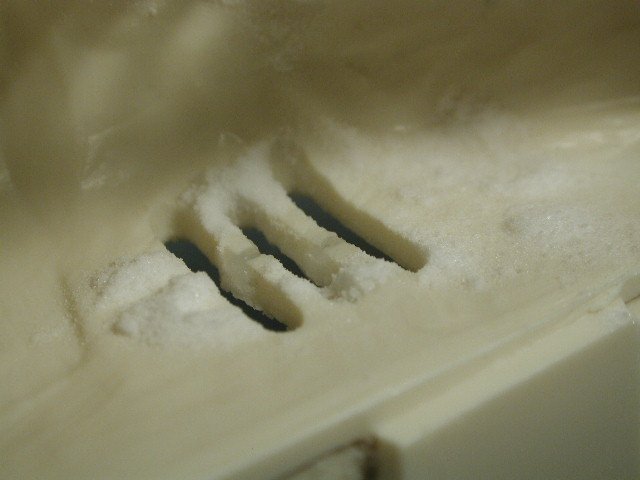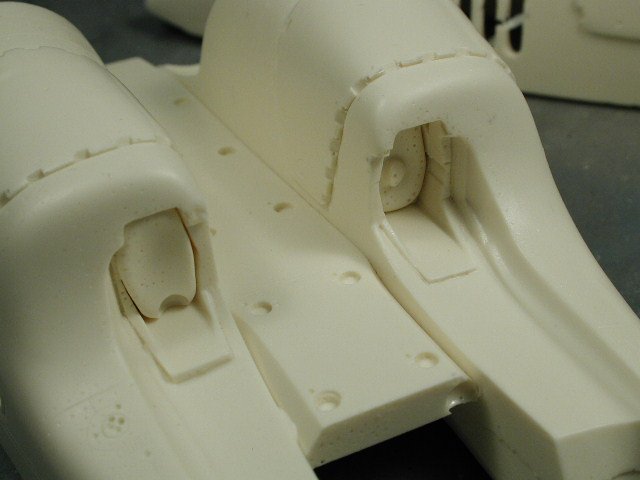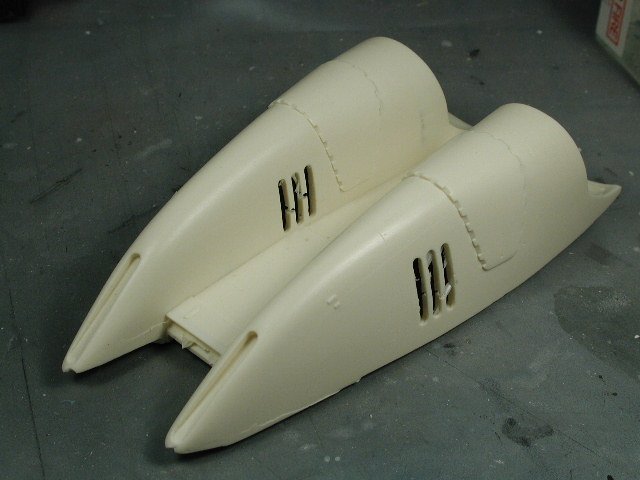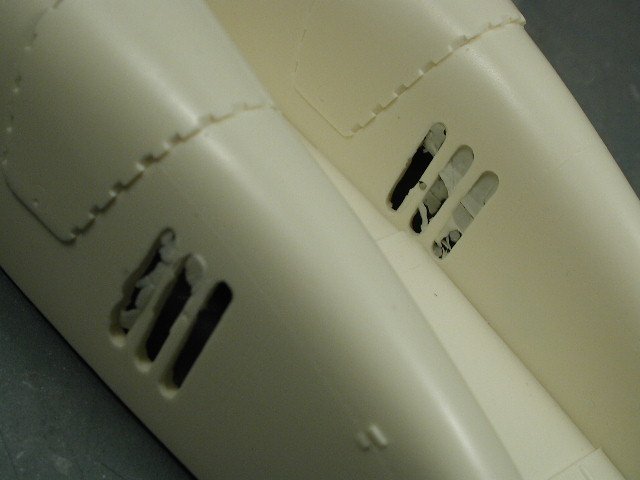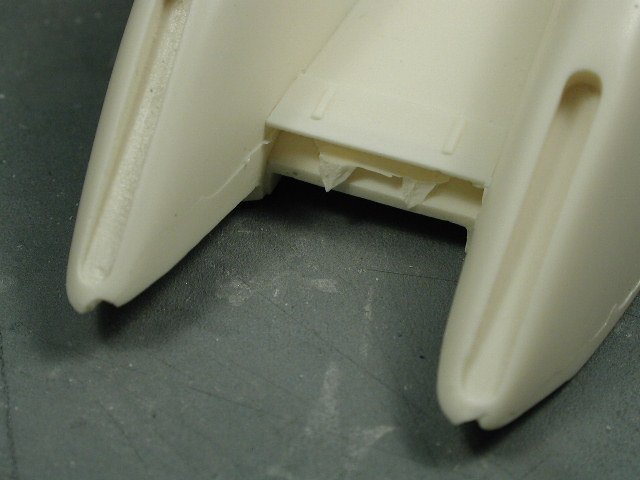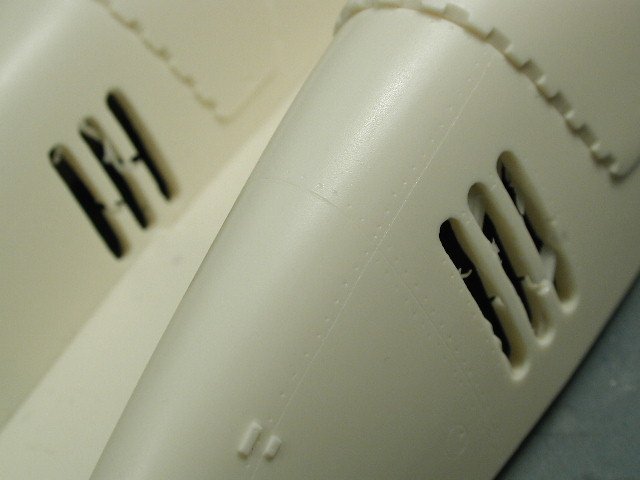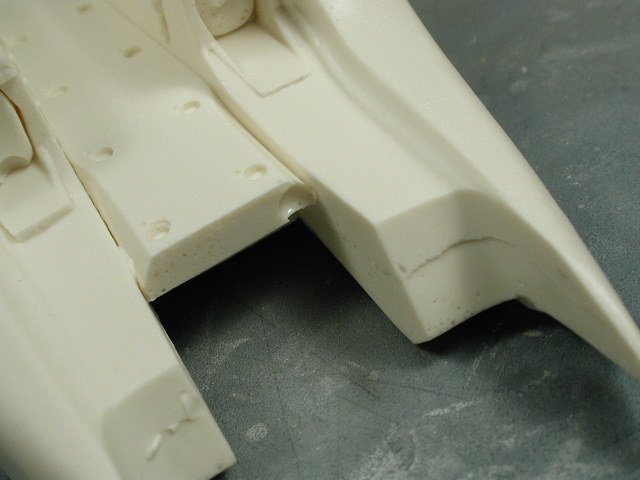-
Posts
4276 -
Joined
-
Last visited
Content Type
Profiles
Forums
Events
Gallery
Everything posted by wm cheng
-
I thought I'd add a little extra detail to this top portion - it looked a little bare... I just cut some thin styrene sheets into these shapes and glued them down. I then took my pinvise and drilled some small holes in it for detail.
-
Ok, back at work on the boosters... Try as I may, I couldn't get the forward intake beween the boosters to look smooth - its a really tough area to sand down, especially the back surface. So I thought I might find something to hide this area. I didn't use that trapizoidial vent for the rear tail section of the Valkyrie, so I thought I'd put it in this slot to cover up the mess. It kind of fits, since its like the rest of the super Valks, when the tail section flips up and around to rest on top of the Valks chest piece. I had to sand down a bit of the resin booster slot and the styrene plastic part to fit. I also fitted some extra corrugated styrene strips that I cut to fit into the two sides and the centre of the trapizoidal vent (too lazy to sand out the two injector pin marks inside this vent, I also glued a strip of the corrugated styrene inside it as well)
-
Nice shots Brett!! I like the corrugated sheet behind the slots. I couldn't find the extra rear leg landing gear bulkheads to my other "in-flight" Valkyries, (ideally you'd need four of these pieces - 2 for the outside and 2 for the inside vents) so I thought I'd keep the good ones for the outside, and fabricate some simplier bulkheads for the inside vent slots. Since you don't catch much other than some silver highlights through the metal mesh, I took the lazy way out and just stuck some stuff onto a styrene sheet. Which I'll paint black, and silver brush some highlights onto.
-
Looks fantastic so far... Great build up! Yep, painting & decaling is the best part to come
-
Its pretty dark in there - but you see it better in person, its really hard to photograph what you see. I've had to artificially over expose the shots to get some of the detail to show up - but they show up much more strongly in person (too strongly for my taste - but this is before I put the mesh in front of it). I didn't dry-fit the mesh yet since the bulkhead engine details are still wet - I'll let it dry first. I don't want to get any paint on the real metal mesh - I think the real metal finish of the mesh makes the model look more realistic. Now I have to start worrying about whether to paint the booster first, and install the engine gak and mesh after all the painting is done or carefully mask off the 3-slot vents? I think I'll like the edges of the 3-slots to be black and only have the exterior grey colour on the outer most surface - not sure yet which is the best way to do it.
-
I also noticed that if I were to put the bulkhead right up against the mesh - I don't see a whole lot, but if I set it back away from the mesh, I start seeing more of it - so I added some bulkhead ends to stand it off from the booster shell so it sits a 1-2mm away from the mesh. The second shot shows some preliminary painting. I painted the entire thing flat black as my basecoat - as well as painting the interior around the 3-slots flat black. Then I mostly dried brushed some metallic grey, medium grey and a spot of white to bring out the highlights. Then I added two spots of yellow just for interest. I'm not sure how far to take it, I still want it to look dark and grungy, but I need to exaggerate the drybrushing so that something will show through the mesh.
-
I found some extra missles lying around from an old 1/100 AMAI kit - but they could really be anything (preferably round and cylindrical) and started gluing them up. I was going to go to town detailing these areas up, but I noticed that the mesh isn't all that transparent (which is good) so with some proper painting, maybe this will be all I need. I am going to make one up to see how it works before I start on the rest of the 3 bulkheads. Here's a shot with the bulkhead taped behind the 3-slots. Yeah Brett, this proved to be a lot more clean-up work than I expected - I am much farther behind than I thought I would be by now. Hey Armetage, check with the Captn' or Samura Monkey - they may have something to help you out - but I was led to believe they were sold out.
-
Now for the engine gak... I had a brain-wave! Why not use the un-used rear landing gear bays - its already got molded details with wiring. We have two from this kit which I made the Valkyrie with the landing gears up, and I'm sure I can dig out another two from another Valk that I've made with the landing gears up too. Thats 4 bulkheads, but I want to lay them horizontally - so I might make up the rest with some extra parts like missles glued side by side and extra landing gear struts. Thats for tomorrow...
-
I found these metal meshes lying around (I must of picked them up a few years ago at a hobby store - I think I was going to drill out the vents on the super-fast packs gun rear section and replace them with these). You can find them at most local hobby stores - these are for model cars engine parts. I thought I might back the vents with this mesh.
-
Here's some before and during shots of finishing out the 3-slot vents. Luckily since I wasn't going to use the opaque vents that the Captn' thoughtfully provided - I didn't have to worry too much about making the vent slots larger through the sanding process. In fact, I wouldn't mind making them a bit larger to show off the gak inside. They are a bit of a mess to start off with, but with sanding (argh!) they started to shape up. I also used a dremel and routed out the inside of the vents to make them thinner and made the thickness more consistent (be very careful if you intend to use a dremel like I did, it will sand away at the resin like butter, a very light touch is needed here, or you'll eat through all the vent struts)
-
I started filing down the 3-slot openings. Naturally I started with the one in the best condition first - it turned out pretty well. I used a flat edged file for the straight bits and a cylindrical file for the ends of the losenge shaped openings. The only thing now is that the resin is a bit un-even and thick around the openings, I might carefully dremel out some resin behind the openings to thin them up a bit since I'm planning on putting "engine-gak" back there. You can see in the left photo in the background one of the 3-slot openings mess before I filed them out.
-
Thanks so much Captn'!! With that great news... I concentrated on the three remaining engine bells, sanding the Mr. Surfacer 1000 smooth - careful to feather it back into the rest of the bells and continue the Captn' great surface details across the seams which have been coated.
-
There was a wierd crazing of the surface after I sanded it, it was like there were lots of tiny cracks - you can see it as white lines in the above photos. I've never seen anything like it, and was sure if they were indents or raised areas. Just to be doubly sure, I hand painted two coats of Mr. Surfacer 1000 over the all the sanded areas. Additionally, you'll notice that all the little fins at the end of the engine bells are also painted too because they all have some divit and hole in the middle of them aswell Not exactly smooth sailing, but after a days work, its done! I hope to sand down smooth the painted Mr. Surfacer (hoping that it should fill in any sanding or hairline cracks which I have missed) and they should be ready for a full coat of primer. You can see the bell on the right is by far darker than the rest - this is the soft one. In fact each bell seems to be of different hardness (varying by its grey colour, the lightest on the left is the hardest, with the darkest on the right being the softest) Not as far as I hoped to get today - the engine bells proved that there was still a lot more clean-up than originally thought. Thats it for tonight. I hope to finish up and prime the bells tomorrow and start clean-up on the actual booster parts themselves, with the 3-slots detail taking priority. I think I might cover them in a metal mesh, and build some kind of engine detail that can be seen though them.
-
I need to re-scribe all that great detail the captn' originally put in - that was lost due to the sanding. Some of the seams were so deep that when you sanded them smooth, the bell no longer had a round shape - so I had to feather the sanding on either side of the seam (which was a lot more difficult than it sounded with this wierd grey elasto-resin). I used a pin-vise to re-drill some of the larger bolt holes. The hasegawa P.E. razor saw to re-etch the circumferential lines, and a sharp tweezer point to re-press in the tiny rivet details.
-
Ok, another 3 hrs of sanding (Man! a whole day of sanding mostly to get the engine bells in shape!) and working my way up the grit papers. Some of the rough scratches are out. One of the bells are quite soft, you can see it deform under my finger pressure just holding it for sanding. I hope this doesn't cause problems later on when I'm painting with flaking paint. As long as I'm gentle, I should be able to bend it back into shape before I start priming.
-
Thanks Sar - sure Talc powder, yeah I have that lying around at home all the time... NOT. I'll look, but I'm not too keen on trying it again... Maybe the polyester putty though. However the areas I used the crazy glue are strong. I've tried to shape the nose of the booster, and it seemed to work out pretty well - I used a combination of file and sand paper, just becareful of the surrounding resin. The crazy glue is hard, however, this resin is pretty hard too, and there doesn't seem as much of a hardness difference as I would of suspected. Back to sanding...
-
Ok, that's another thing to add to my next hobby store shopping list; Tamiya polyester putty (I assume its epoxy putty), Mr. Base White, and slow-cure gel crazy glue... At least now I think I'm on the right track with the sanding (I thought I wasted good money on this sander up till now...) so I switched to some industrial strength 50 grit diamond sandpaper instead of the sanding film - and finally it's working better on some of these bell seams. At least now I'm getting rid of the seams instead of my sandpaper tooth! I think I need to work my way back up the grit ladder to 200 to smooth out the rough sandpaper marks, and probably coat it with some Mr. Surfacer before the primer since I want to use the Alclad metalizer on the engine bells and they need to be absolutely flawless for the metal finish. You can see that the bell deformed from just me holding it with my fingers and thumb.
-
I'm curious, did I get a bad cast? What's the quality of the kits recieved by other MWers here? Did you guys also get these "grey" flexible material engine bells? Its wierd that some bits are so soft, while others so hard, like the 4 little engine fins - on one bell they are like gummy bears, on another bell, they were so hard and brittle that one broke off before I started even sanding it!! hmmm... Well, I finally remembered that I bought a dremel contour sander a while ago thinking that it would ease my sanding chores (I hate sanding the most out of any process in model making!) but I never used it since because even on the lowest setting, it ate through my styrene like butter. But with this crazy resin, it just might work. So I doned on the 100 grit sanding film and went to town on these bells. After quite a bit of work, its started to smooth out the seam - only after it wore away at my sanding film to the bare plastic!!
-
I'll leave the booster to cure for a little bit, the crazy glue is actually warm to the touch while curing, that's when I know I've used a lot to fill all the flaws. On to the engine bells! Man, I don't know what kind of resin these are made of, but its pretty wierd, some bits are quite soft and flexible, while others are a real *&$%$@#! to sand. These shots show some of the typical seams (2 each per bell) that I need to get rid off. Man, after so much sanding, I barely made a dent!! What are these things made of?! I've never delt with this material before. The entire engine bell deforms under the pressure of my hands holding it to sand, but the seam refuses to go away! I started to move down the grit ladder from 400-200-100 now...
-
Hey thanks for the tip NB4M, I'd have to look around for this slow-cure stuff next time I'm back at the hobby store. Ok, on to the tips, the reconstruction was actually too large to just pack with baking soda, I just did it in layers, applying crazy glue, then dipping it into baking soda, then applying crazy glue on top of that - and built it up in 4-5 layers till I filled it beyond the shape I want to file down to. The good thing about using crazy glue is that it dries almost instantly allow me to work on it right away - instead of letting the putty dry. You can see in this photo that the main central intake may take a bit of work trying to get those two resin sprue connections out of this crevice situation
-
In these photos you can see the clear (milky clear) bits are filled with the crazy glue / baking soda mixture. I added a lot more excess than I needed so I could file away the extra crazy glue. I don't believe I could of used my traditional ways of filling here (although I haven't used epoxy putty yet) since these flaws are too large for Mr. Surfacer, and the resin in these tight cavities would not provide enough tooth for the regular Tamiya putty to adhere too. The regular Tamiya putty actually includes solvents in the mixture to slight melt the surrounding plastic to create a better bond too, the resin won't react this way, so the regular putty could just pop off and would not provide any strength for the delicate intermediary struts. As you can see the openings themselves are quite rough, I'd need to use my flat files for the sides and my round file for the tops and bottoms later on. I will allow these crazy glue fills to cure now.
-
OK, that baking soda mixed with crazy glue idea to fill in certain areas was a complete bust! - failure. I don't get it, I tried mixing a bit of baking soda with the crazy glue in a plastic bowl, and the baking soda caused the crazy glue to instantly solidify - all I got was clumpy lumpy bits of dried crazy glue. I tried all different consistancies, but I couldn't make it work in the end. However, the crazy glue (as mentioned by Valkyrie before) is really hard - which in this case works to my advantage - I need to majorly reinforce those intermediary struts in the 3-slot vents before I can properly file them down to proper shape - otherwise they'd just snap while I was sanding them. So I tried to fill them with crazy glue, but the bubbles where actually too big to just fill in with crazy glue only, so I decided to add some baking soda to the holes, tried to pre-pack them with the soda, then added the crazy glue to the outside. This seemed to work, plus the struts were strong now (hopefully able to withstand the sanding and shaping by the files)
-
I would need to drill out these leg/engine ports to allow the legs feet tips of the Valkyrie to slip in.
-
OK, 3 hours later and not much is happening - either this is a bad day... or this is where the "real" work begins... Starting on the actual resin booster kit itself - now I'm going over it with a fine tooth comb to visually inspect it for flaws and work to be done (intead of the blinded gee Wow! filled with glee that someone actually finally tackled one of my favourite subject mechs) and there are indeed some work to do (even though the Captn' did a fantastic job sculpting this baby, the casting leaves quite a bit of clean up work. My particular cast has bubbles which break every intermediary struct within the 3-slot vents (which makes them very weak). Secondly, there was a bubble on both tips of the forward booster where it mates to the top of the Valkyrie, which needs to be filled, shaped and re-contoured to match. Aside from various seam lines, the forward intake is going to be a bit of a surgical clean-up too, since the yellow resin is quite hard and brittle compared to the white stuff. Maybe I've been away from resin kits and have been spoiled by beautiful Platz white resin or Hasegawa styrene for too long, but all this work is a bit surprising.
-
Hey everybody, I'm back for the whole day today... Hope to make some real progress... Yes I've sanded smooth the gear doors, but there are still panel seams between the doors and fuselage, I think its more important to make it look smooth and consistent first, then re-etch the panel lines if necessary, or even draw them in with a thin pencil to be sealed by a clear coat later. Thanks for the tip on the Mr. Base White, I'll look for it when I get to a hobby store next. I'll still try the baking soda and crazy glue thing, I think the baking soda makes the crazy glue less hard - just wanted to learn a new thing or two. If it doesn't work, I'll use my old Tamiya putty, and I'll still use Mr. Surfacer for the small bubble stuff. But when I post the pictures, you'll see my booster requires a little more re-construction than just seam filling.

